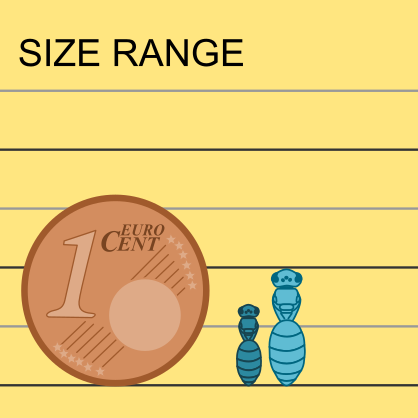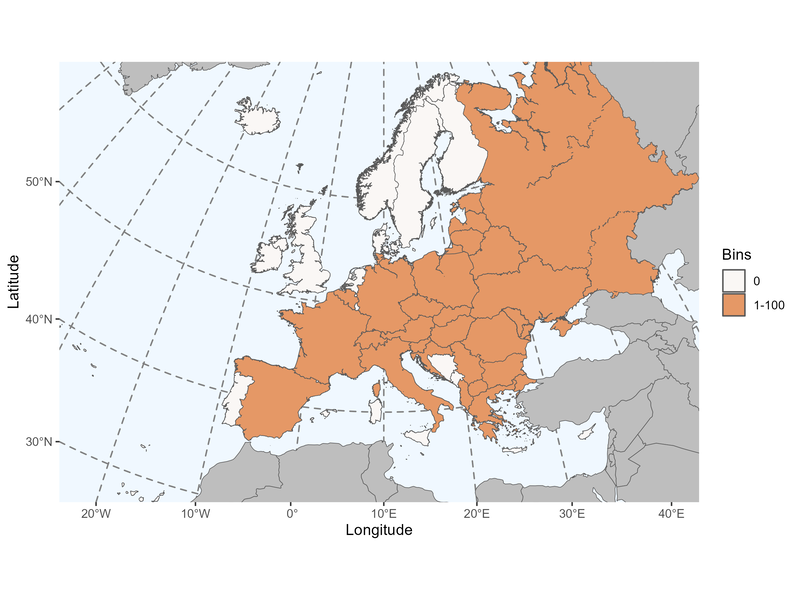Author: Spinola, 1808
|
Type species: Rophites quinquespinosus Spinola, 1808, monobasic.
Synonyms: Rhophites Agassiz, 1846. |
Clade: Anthophila
Family: Halictidae Subfamily: Rophitinae Tribe: Rophitini |
|
Distinctive traits
|
Pictures of distinctive traits.
|
Morphologically close genera and how to distinguish them
Rhophitoides species have labial palpi not very elongate, with segments 1-3 about the length of those of maxillary palpi. Females have no frontal spines. Males have antennae with segments about as long as wide.
Dufourea have no abdominal hairs band, and a propodeal horizontal area longer than the scutellum and posteriorly rounded.
- Rophites - Rhophitoides
Rhophitoides species have labial palpi not very elongate, with segments 1-3 about the length of those of maxillary palpi. Females have no frontal spines. Males have antennae with segments about as long as wide.
- Rophites - Dufourea
Dufourea have no abdominal hairs band, and a propodeal horizontal area longer than the scutellum and posteriorly rounded.
General comments on Rophites species identification
Species identification involves criteria on sternites, legs and body sculpture, so legs and wings should be slightly spread out.
Species identification involves criteria on sternites, legs and body sculpture, so legs and wings should be slightly spread out.
Sorry, but the species identification tool is not yet available for Rophites.
Please check the reference(s) below for traditional keys.
Please check the reference(s) below for traditional keys.
List of the 7 Rophites species found in Europe (Ghisbain et al. 2023):
Rophites algirus Pérez 1895
Rophites clypealis Schwammberger, 1976
Rophites hartmanni Friese, 1902
Rophites hellenicus Ebmer, 1984
Rophites leclercqi Schwammberger, 1971
Rophites quinquespinosus Spinola, 1808
Rophites thracius Ebmer, 1993
Rophites algirus Pérez 1895
Rophites clypealis Schwammberger, 1976
Rophites hartmanni Friese, 1902
Rophites hellenicus Ebmer, 1984
Rophites leclercqi Schwammberger, 1971
Rophites quinquespinosus Spinola, 1808
Rophites thracius Ebmer, 1993
References with identification keys for some of the species:
- Amiet F., Müller A. & Neumeyer R.,1999. Apidae 2: Colletes, Dufourea, Hylaeus, Nomia, Nomioides, Rhophitoides, Rophites, Sphecodes, Systropha (Fauna Helvetica 4). Centre suisse de cartographie de la faune (CSCF), Neuchâtel, 239 pp.
- Pesenko, Y.A., Banaszak, J., Radchenko, V.G. & Cierzniak, T. 2000. Bees of the family Halictidae (excluding Sphecodes) of Poland. Bydgoszcz. 348pp.
Page contributors:
You noticed a mistake? You have a suggestion to improve this page?
Don't keep it to yourself, contact us and become a contributor to IDmyBee!
- Adrien Perrard (Dec. 2023)
- Adrien Perrard (Dec. 2019)
You noticed a mistake? You have a suggestion to improve this page?
Don't keep it to yourself, contact us and become a contributor to IDmyBee!
References used to write this page:
- Ghisbain, G., Rosa, P., Bogusch, P., Flaminio, S., Le Divelec, R., Dorchin, A., Kasparek, M., Kuhlmann, M., Litman, J., Mignot, M., Müller, A., Praz, C., Radchenko, V.G., Rasmont, P., Risch, S., Roberts, S.P.M., Smit, J., Wood, T.J., Michez, D. & Reverte, S. (2023). The new annotated checklist of the wild bees of Europe (Hymenoptera: Anthophila). Zootaxa, 5327(1), 1-147.
- Michener, C.D. 2007. The Bees of the World, 2nd Edition. The John Hopkins University Press, Baltimore.
- Michez D., Rasmont P., Terzo, M., Vereecken, N. 2019. Abeilles d'Europes. Hymenoptères d'Europes, Volume 1. N.A.P. Editions.
- Nieto, A., Roberts, S. P., Kemp, J., Rasmont, P., Kuhlmann, M., García Criado, M., ... & Michez, D. 2014. European red list of bees. Luxembourg: Publication Office of the European Union, 98.
- Rasmont, P., Devalez, Jelle, Pauly, A., Michez, D. & Radchenko, V.G. 2017. Addition to the checklist of IUCN European wild bees (Hymenoptera: Apoidea). Annales de la Société entomologique de France 53: 17-32.



